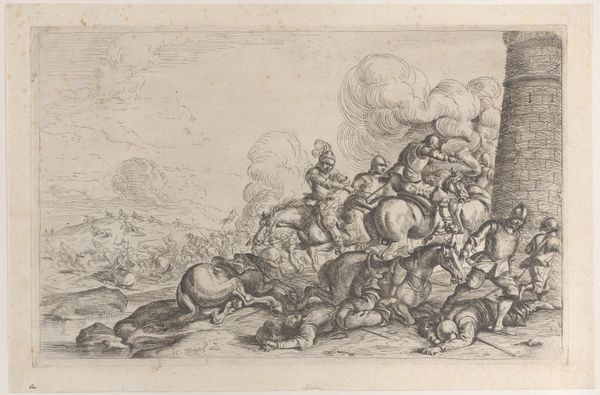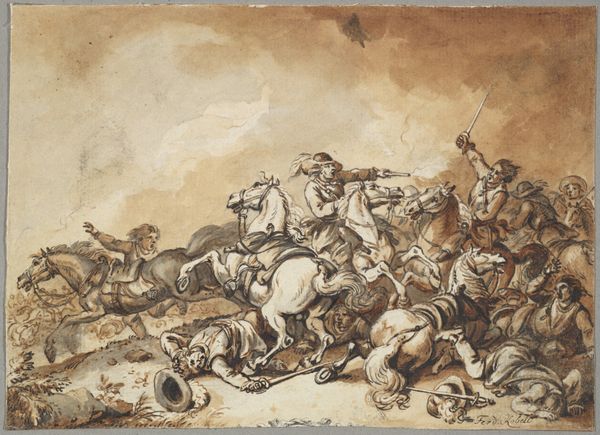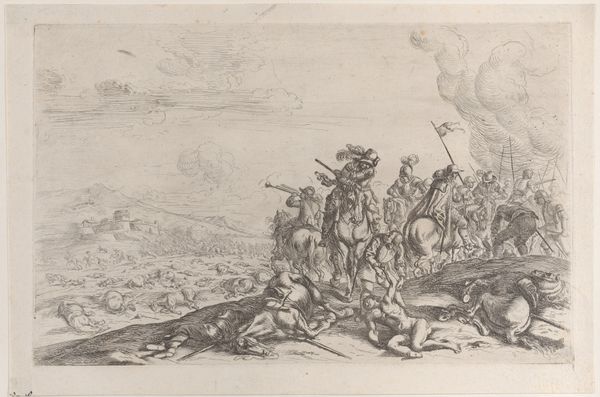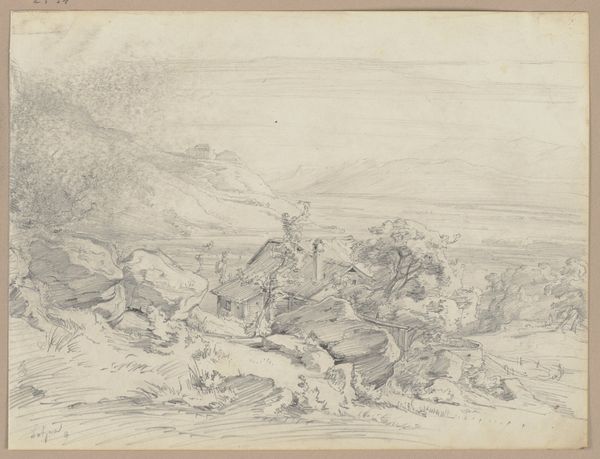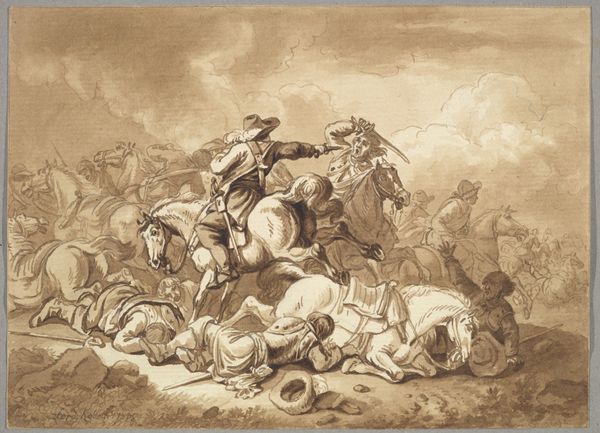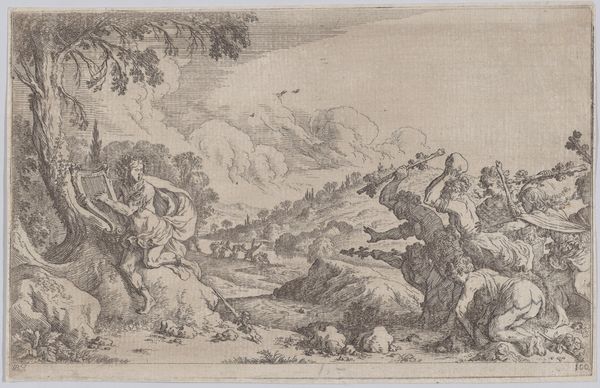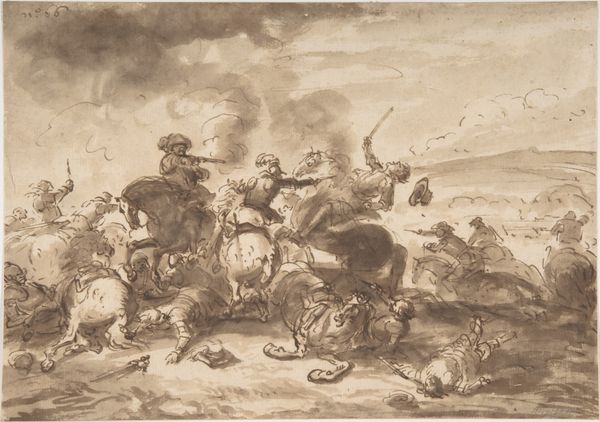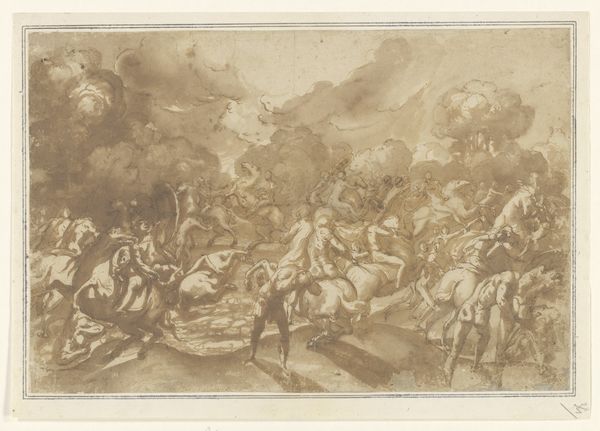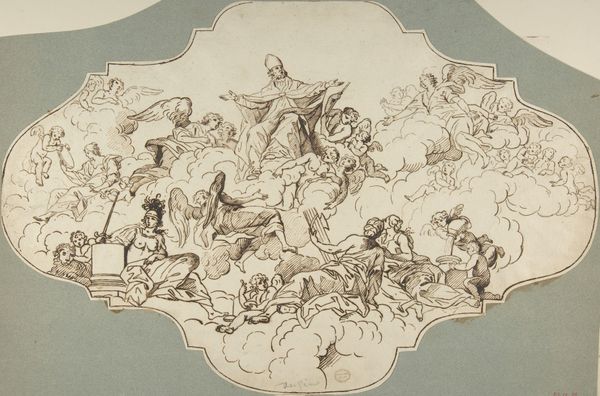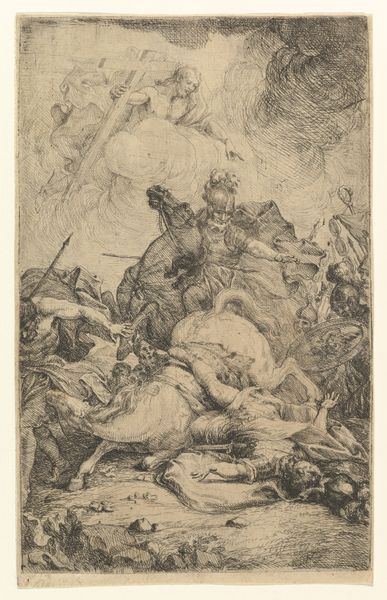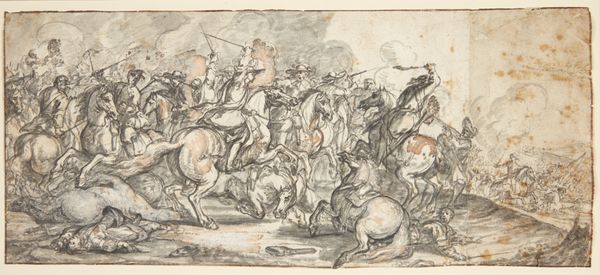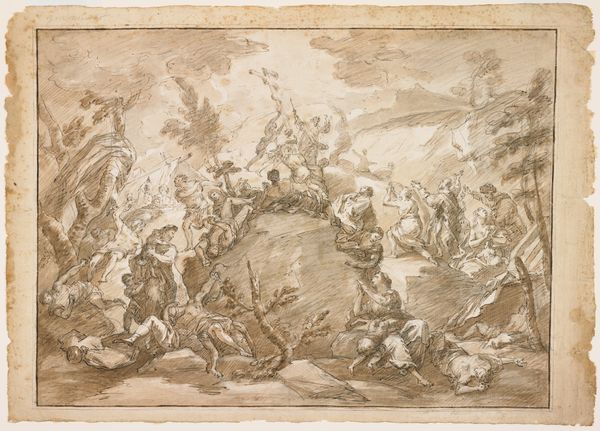
drawing, ink
#
drawing
#
landscape
#
mannerism
#
figuration
#
ink
#
history-painting
Dimensions: 199 mm (height) x 277 mm (width) (bladmaal)
Curator: Before us, we have a drawing titled "Equestrian battle" made sometime between 1598 and 1601 by an anonymous artist. The medium is ink, and it's currently housed here at the SMK, Statens Museum for Kunst. Editor: It’s immediately chaotic, isn’t it? Horses rearing, figures sprawling, all rendered in such fluid lines. It feels less like a depiction of history and more like a visceral sketch of war's frenzied energy. Curator: I find myself focusing on the way the ink defines not just form, but also the motion. You can almost feel the thunder of hooves. Thinking of its material existence, the availability of ink, even the type of paper available back then, these all influence what's possible. Were they using quills? How coarse or fine was the paper? It's all connected to what's portrayed. Editor: Absolutely, it's a fascinating exercise in controlled chaos. What intrigues me is the dreamlike quality, the looseness allowing my mind to fill the space. It reminds me how violence reverberates long after it occurs—we see it in the ink, we sense it in the style. Mannerism often embraced this drama. It captures not necessarily the truth of the battle, but maybe the exaggerated perceptions of those caught within. Curator: That ties to the social context too, right? This would have been viewed by patrons who understood the implications of war, understood the labor required to arm a soldier. So the art reflects this elite worldview back. The materials elevate what would be a kind of reporting on warfare to something beautiful, perhaps masking, maybe celebrating brutality at the same time. Editor: Yes, and even the landscape, barely there in wisps of ink, feels haunted. There’s a flatness to the scene which draws you straight to the human element. There is not a lot of naturalism, the people are the only focus. Curator: Thinking about its placement within the museum’s collection adds another layer. Displaying a piece like this today asks questions about how we memorialize, interpret, even consume depictions of violence. Editor: It invites us, I think, to look deeper at what fuels human conflict. By looking at the way ink and paper meet intention and history, it brings everything back into play. Curator: Ultimately, its immediacy still carries resonance. Seeing the hand of the artist, the frenetic movement captured in a few strokes – it truly embodies a human spirit.
Comments
No comments
Be the first to comment and join the conversation on the ultimate creative platform.
